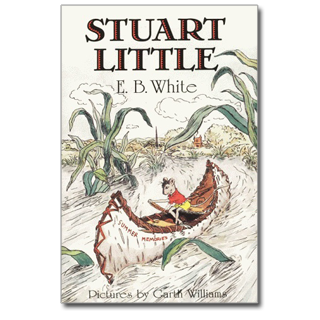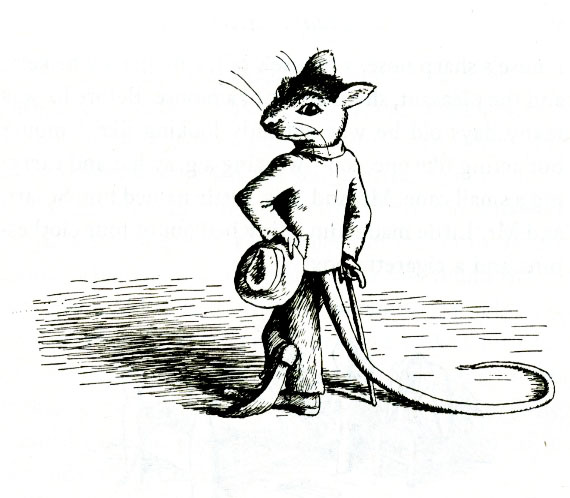
A FEW OTHER EVENTS FOR
JULY 11:
- Happy birthday Patricia Polacco (Thank You Mr. Falker) and James Stevenson (What’s Under My Bed?).
- In 1914, Babe Ruth makes his Major League Baseball debut, as a pitcher for the Boston Red Sox. Read Home Run: The Story of Babe Ruth by Robert Burleigh, illustrated by Mike Wimmer; Babe Ruth Saves Baseball by Frank Murphy, illustrated by Richard Walz; and Babe Ruth and the Baseball Curse by David A. Kelly, illustrated by Tim Jessell.
- To Kill a Mockingbird by Harper Lee was published in 1960.
- In 1975, the ancient Terra Cotta Warriors were discovered in Xi’an, China, by farmers. Read The Emperor’s Silent Army by Jane O’Connor and Terra Cotta Warriors: Guardians of China’s First Emperor by Jane Portal.
On July 11, 1899, Elwyn Brooks White, known to his friends as Andy and the literary world as E. B., was born in Mount Vernon, New York. He would eventually become a Maine man, where he lived with his wife Katharine.
White published his first article in The New Yorker in 1925 and continued to write witty and beautifully crafted pieces for the magazine for six decades. With James Thurber he published Is Sex Necessary? He also updated The Elements of Style by William Strunk—a book now commonly called Strunk and White.
As brilliant an adult writer as he was, White became even more renowned when he turned to writing novels for children. In October of 1945 his first effort, Stuart Little—a droll story about a small mouse born to a family living in Manhattan—was published by Harper and Brothers. White had begun Stuart Little in the twenties, planning to share his mouse stories with family members, and eventually expanded his ideas into a novel. Although Stuart Little did receive some favorable reviews—the venerable Horn Book Magazine said it was “full of wit and wisdom and amusement”—other children’s book critics were not so amused. Anne Carroll Moore, the New York Public Library’s fierce defender of the proper content for novels for children ages ten and up, read the book before it appeared. She sent no less than a fourteen-page handwritten letter to Katharine White, insisting that the book was “non-affirmative, inconclusive, unfit for children” and would harm White’s reputation. She particularly objected to a mouse child having human parents. One of White’s New Yorker colleagues suggested that if he had he changed one single word—if Stuart had “arrived” in the family rather than have been “born” into it—the ruckus over his parentage might never have happened. Certainly, the cocreator of Strunk and White could appreciate the power of a single word.
Children, however, found the book hilarious. In this episodic and picaresque adventure, a two-inch-tall hero, who “looks very much like a mouse,” engages in a series of adventures—loosening stuck piano keys, fetching a ring from a drain, and getting rolled up in a window shade. I find that many adults who read this book as a child particularly remember Stuart’s magical ride on a sailboat in Central Park. Eventually, Stuart takes up a quest to rescue a beautiful bird named Margalo.
White would turn his hand to only two other children’s novels: The Trumpet of the Swan and Charlotte’s Web. For anyone hunting for new information about White, Michael Sims in The Story of Charlotte’s Web: E. B. White’s Eccentric Life in Nature and the Birth of an American Classic. has taken a fresh approach to White’s work, showing how the author’s life shaped his writing. It provides fascinating insights for all White readers.
White’s novels provide the best read-aloud experiences any family or any classroom can have. His books have garnered an enthusiastic audience of readers from eight to one hundred. Happy birthday, E. B. White. Thank you for ignoring your critics and persevering as a writer of books for children.
Here’s a passage from Stuart Little:
When Mrs. Frederick C. Little’s second son arrived, everybody noticed that he was not much bigger than a mouse. The truth of the matter was, the baby looked very much like a mouse in every way. He was only about two inches high; and he had a mouse’s sharp nose, a mouse’s tail, a mouse’s whiskers, and the pleasant, shy manner of a mouse. Before he was many days old he was not only looking like a mouse but acting like one, too—wearing a gray hat and carrying a small cane. Mr. and Mrs. Little named him Stuart, and Mr. Little made him a tiny bed out of four clothespins and a cigarette box.
Originally posted July 11, 2011. Updated for .














This is a book from my childhood. A teacher or librarian must have steered me to it. I thought it was fascinating. Interesting to hear about fourteen pages of fussiness. I will have to remind the teachers that it’s a great read aloud. Thanks again Anita!
Another one that’s on my list to reread this summer (I just finished Charlotte’s Web). I’ll also have to check out the new biography – sounds fascinating!
I have long and long, read a good deal of of E. B. White’s work for adults, and I’ve also read Charlotte’s Web, (thank’s to Anita.) but I don’t think I’ve actually read this one. I’ll have to do that.
Ahem.. I did like the movies. Grin.
OH! To Kill a Mockingbird is my favorite book of all time. My Mama grew up near the coal mines of southern Colorado. My Grandad was in charge of the mules at the mines. My Grandma delivered the babies in the camp.Their neighbors were of many different nationalities and Mama learned how to cook from all of them. I feel that this is why Mama taught us that no one was better than us and we were no better than anyone else. TKAM was that book that made me realize what Mama instilled in us, that all humans were the same and to be treated equally with dignity. I didn’t read it until my daughter read it in eighth grade. If I had read it before my children were born, they would be Atticus and Scout. They’re glad I didn’t. A book everyone in the world should read. Thank you again Anita. (Would love to hear if you know of books about coal miners.)
I’ve read Stuart Little a few times. In fact I once knew a real Stuart Little in New York, and our families sang Christmas carols together. I love much of the book except that ending. Really, that’s an ending? I know it’s almost sacrilegious to criticize this classic, but that ending has always left me cold. Even though he drives off (and many stories have their heroes drive off), there was a lack of conclusion to the book, almost as though there needed to be another chapter. Oh, well.
This is such a timeless story….it’s endearing to me that my dad loved having this book read aloud to him by his mother (it’s one of his favorite memories of time with his mother, who died when he was only eight years old) as much as my own children enjoyed reading it aloud with me. That’s what makes a classic!
I remember when my third grade teacher would read this book out loud to the class. It was one of the few books that everyone in the entire class loved. We would line up so quietly and in the straightest line possible everyday after lunch just so we could get to read aloud as fast as possible. For this reason I chose to read to my third grade class this same book. They loved this book just as much as I had. Every child reacted to all of Stuart’s adventures and kept asking for more. Half way through the book I realized that the children were bringing in their own copies to follow along and to examine the pictures more. This is a great book and is one of those rare finds.
Every few years, I borrow the audio book of Charlotte’s Web from the library, usually when I have a long drive. There is so much in his reading of it that I did not get off the page, most memorably: the gander is funny when White reads! (I always found him kind of annoying.) It’s my favorite audio book.
I just love the way E.B. White blends reality with fantasy. The Little’s are not at all concerned that their second child looks like a mouse. Stuart’s mother does worry about his size, but is reassured by the family doctor. Stuart is truly one of the family, and although his adventures take him far from home, his faith in himself is securly rooted in the love of his proud parents.
As a child, I loved reading Stuart Little and Charlotte’s Web. As a mother, I read both of these books, as well as Trumpet of the Swan, aloud to my children. We would often paraphrase Charlotte’s Web when a family member (human or animal) was doing something fantastic, “That’s SOME kid (or dog or cat)!”
I loved reading this book as a child and have all three of his books in my classroom library. I have read Charlotte’s Web as a read aloud, but I have not read Stuart Little to my students. I’m sure they would love it as much as I did!
I read this book with two of my lunch book clubs this year. My students loved it . They wondered why it didn’t match the movie. I hope to read it with my student again.